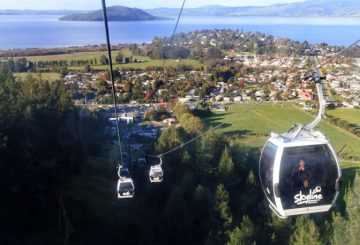对新西兰优质冰淇淋行业的最新研究表明,随着消费者越来越多地寻求顶级品质的食品,出口商可以在包括中国在内的宝贵海外市场找到新的买家。
这项新研究发现了扩大对澳大利亚、亚洲和英国冰淇淋出口的空间。经济发展部长斯图尔特·纳什周三在发布政府机构管理的食品和饮料信息项目报告时表示,这表明优质冰淇淋可能会跟随优质葡萄酒和蜂蜜出口的全球成功。
纳什说:“新西兰几乎每个地区都生产冰淇淋,大约有48家本地制造商。” 他补充说,挑战在于将新西兰在乳制品出口方面的强劲全球地位转化为利润丰厚的冰淇淋和其他冷冻食品的全球市场。
纳什说:“我们的第一家本地冰淇淋制造商从100多年前世界上最好的牛奶和奶油开始,至今仍在引起涟漪。”
根据亚太地区的一些自由贸易协定(FTA),新西兰已经享有冰淇淋免关税准入。报告称,这包括根据新西兰-中国自由贸易协定免关税进入新西兰最大的冰淇淋出口市场中国市场。
消费者对由绵羊、鹿、水牛或山羊的牛奶制成的冰淇淋很感兴趣。来自燕麦奶、椰奶或豆浆的植物性冰淇淋的全球市场不断增长。他说,冰淇淋和冰糕使用了新西兰丰富的园艺产品中最好的。
“锥体中不起眼的曲棍球 pokey 是猕猴桃的标志,也是夏天的重要组成部分。但是,工匠生产商已经在有机,季节性和丰富的成分或口味方面进行了创新,例如A2牛奶,海盐,花生酱,大麻和姜黄。”
他说,新西兰和英国原则上在2021年达成的自由贸易协议为冰淇淋和其他乳制品出口提供了巨大的潜力。
冰淇淋出口商还可以应对全球 COVID-19 疫情带来的新的消费者需求。该报告称,人们对健康、可持续、低碳或纯素食食品以及直接从超市购买供在家消费的优质产品的兴趣与日俱增。
这位部长说,新西兰拥有优质的原料和较低的生产成本;拥有深受消费者信赖的熟练劳动力和加工行业;并且靠近或开放进入主要市场,随着新的贸易协定,这些市场将进一步增长。
该报告建议冰淇淋生产商利用乳制品出口供应链的现有优势;瞄准高端市场并制定 “独特的猕猴桃口味”;并将重点放在冰淇淋消费量已经很高的少数发达国家。



















































-360x245.jpg)









